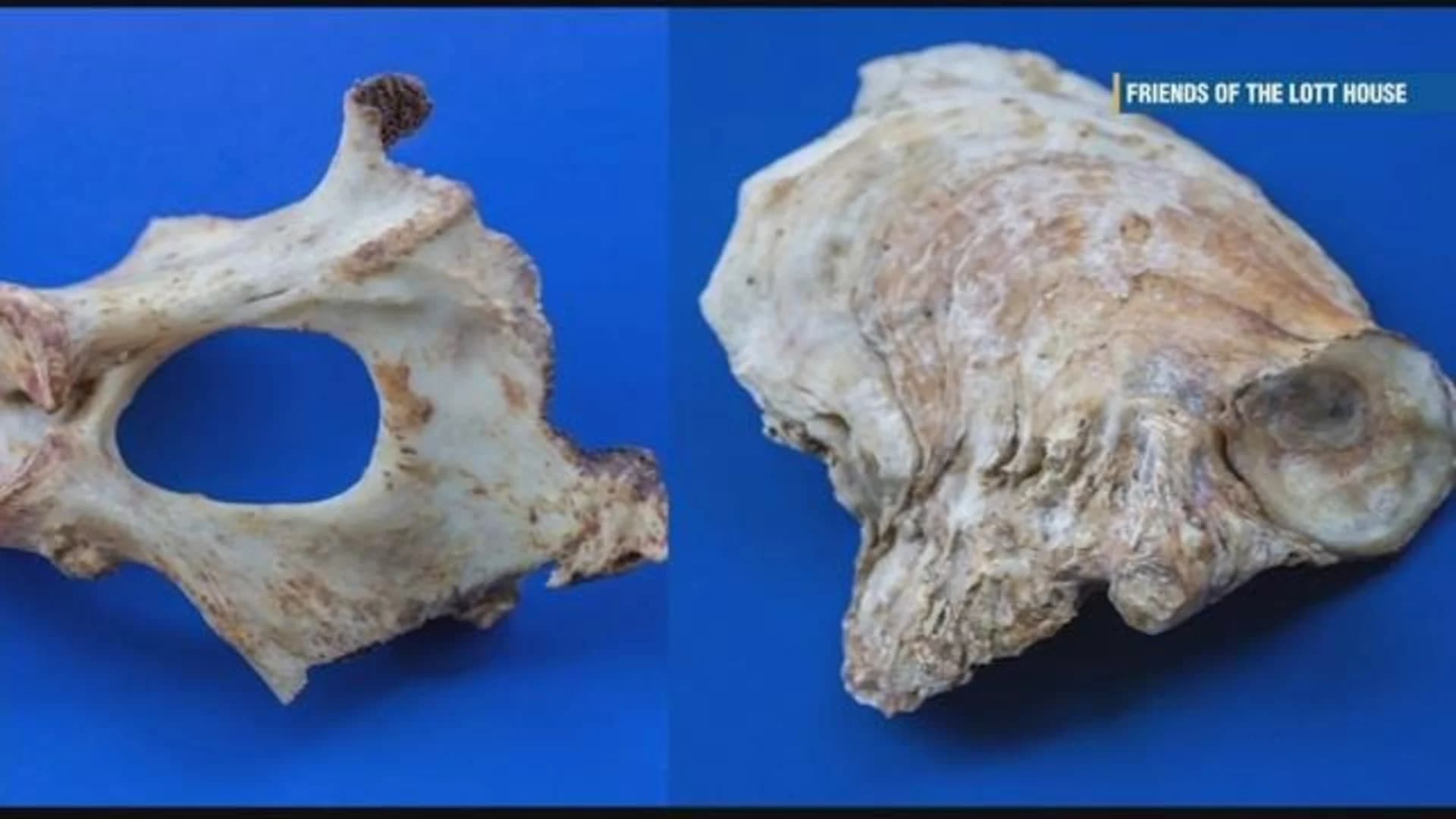
The Lott House in Marine Park holds items with historical significance, especially during Black History Month.
The Lott family lived on a plot of land in Marine Park when it was known as the town of Flatlands. At one point, the family owned a dozen slaves to take care of their farmland.
"At a time New York had the second highest per capita of enslaved persons in the United States, second only to Charleston, South Carolina,” says Alyssa Loorya, vice president of Friends of the Lott House.
"At a time New York had the second highest per capita of enslaved persons in the United States, second only to Charleston, South Carolina,” says Alyssa Loorya, vice president of Friends of the Lott House.
A portion of the house was built in 1720 and the other half in 1800. While doing archaeology work in 1999, crews noticed a trap door that only locked from the outside. They they found astaircase and the stairs would come out into the kitchen.
"On one side we had the corn cobs in the shape of a cross or an “x” a mark that is tied to the Bakongo Cosmogram, and on the other side we had other items which later we realized to be a spirit cash, a pouch tied with hemp string, pelvis of a sheep or a goat, an oyster shell that had a spat, a little baby oyster on it,” says Loorya.
It is believed they were ritual items used by some of the enslaved people on the property.
"It would make sense to have some kind of a warding, what can I say, a warding symbol in there to keep them safe. They would have wanted it,” says H. Arthur Bankoff, professor of Anthropology and Archaeology at Brooklyn College.
The slaves on the property were all freed by 1805. Years later, it may have been a stop on the underground railroad.
"The room at the top of the stairs that had a closet within a closet,” says Bankoff.
Both Bankoff and Loorya believe the house is not only important to black history, but the history of New York City.
"On one side we had the corn cobs in the shape of a cross or an “x” a mark that is tied to the Bakongo Cosmogram, and on the other side we had other items which later we realized to be a spirit cash, a pouch tied with hemp string, pelvis of a sheep or a goat, an oyster shell that had a spat, a little baby oyster on it,” says Loorya.
It is believed they were ritual items used by some of the enslaved people on the property.
"It would make sense to have some kind of a warding, what can I say, a warding symbol in there to keep them safe. They would have wanted it,” says H. Arthur Bankoff, professor of Anthropology and Archaeology at Brooklyn College.
The slaves on the property were all freed by 1805. Years later, it may have been a stop on the underground railroad.
"The room at the top of the stairs that had a closet within a closet,” says Bankoff.
Both Bankoff and Loorya believe the house is not only important to black history, but the history of New York City.
They say they will continue to work on restoring the home and digging up more archaeological finds.
More from News 12
1:22

2 injured in fire at Bed-Stuy senior living facility
1:29

Mostly cloudy Sunday, with showers arriving in the afternoon in Brooklyn
1:44

2 men arrested in violent Dyker Heights carjacking
0:30

Gov. Hochul signs law expanding school anti-bullying protections
2:17

27-year-old man arrested, accused in rape of 12-year-old girl in Williamsburg
1:20
